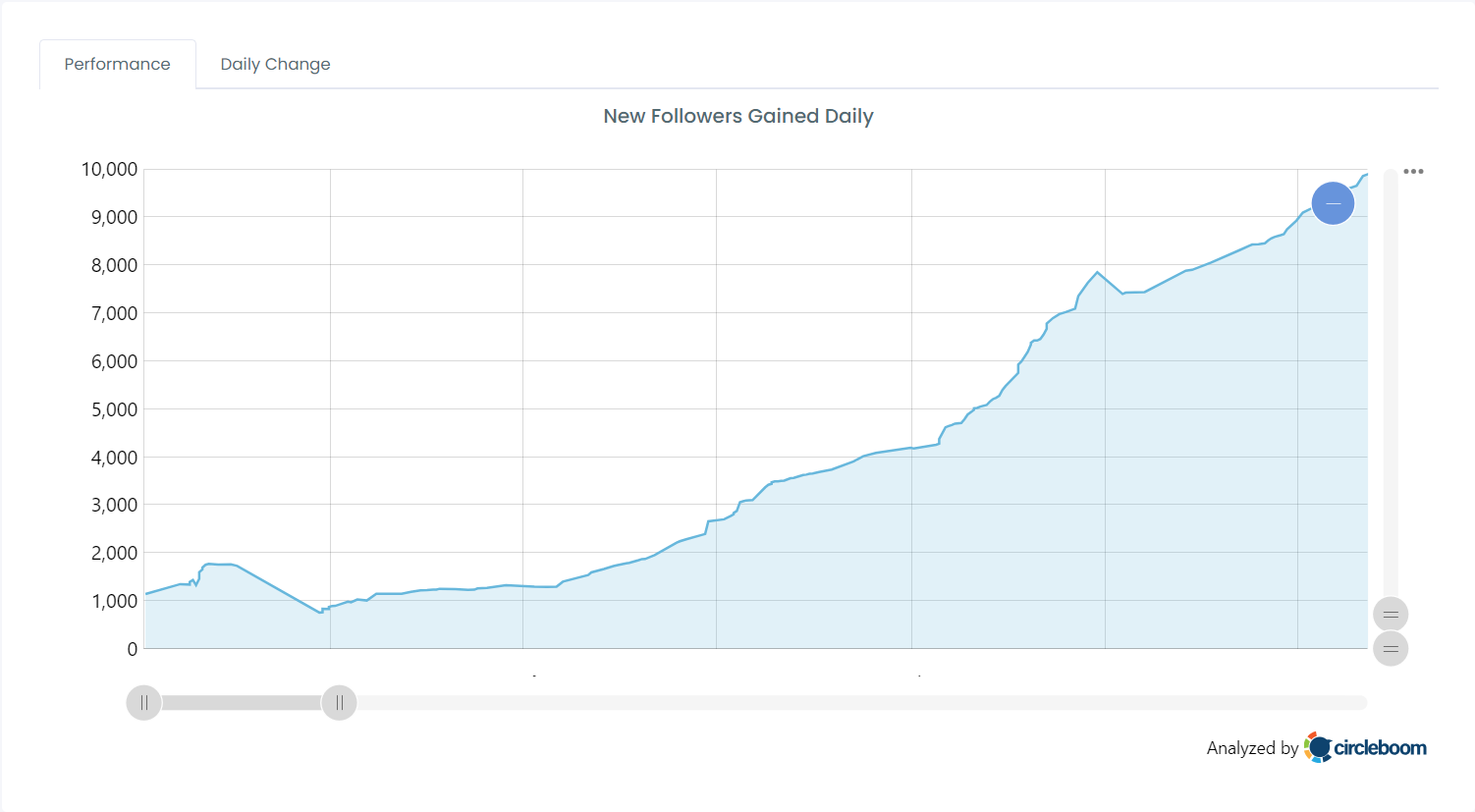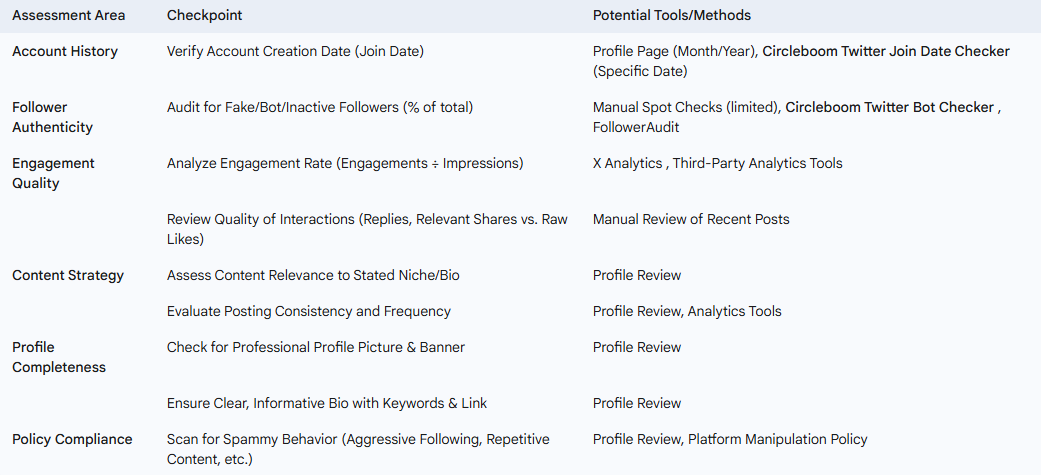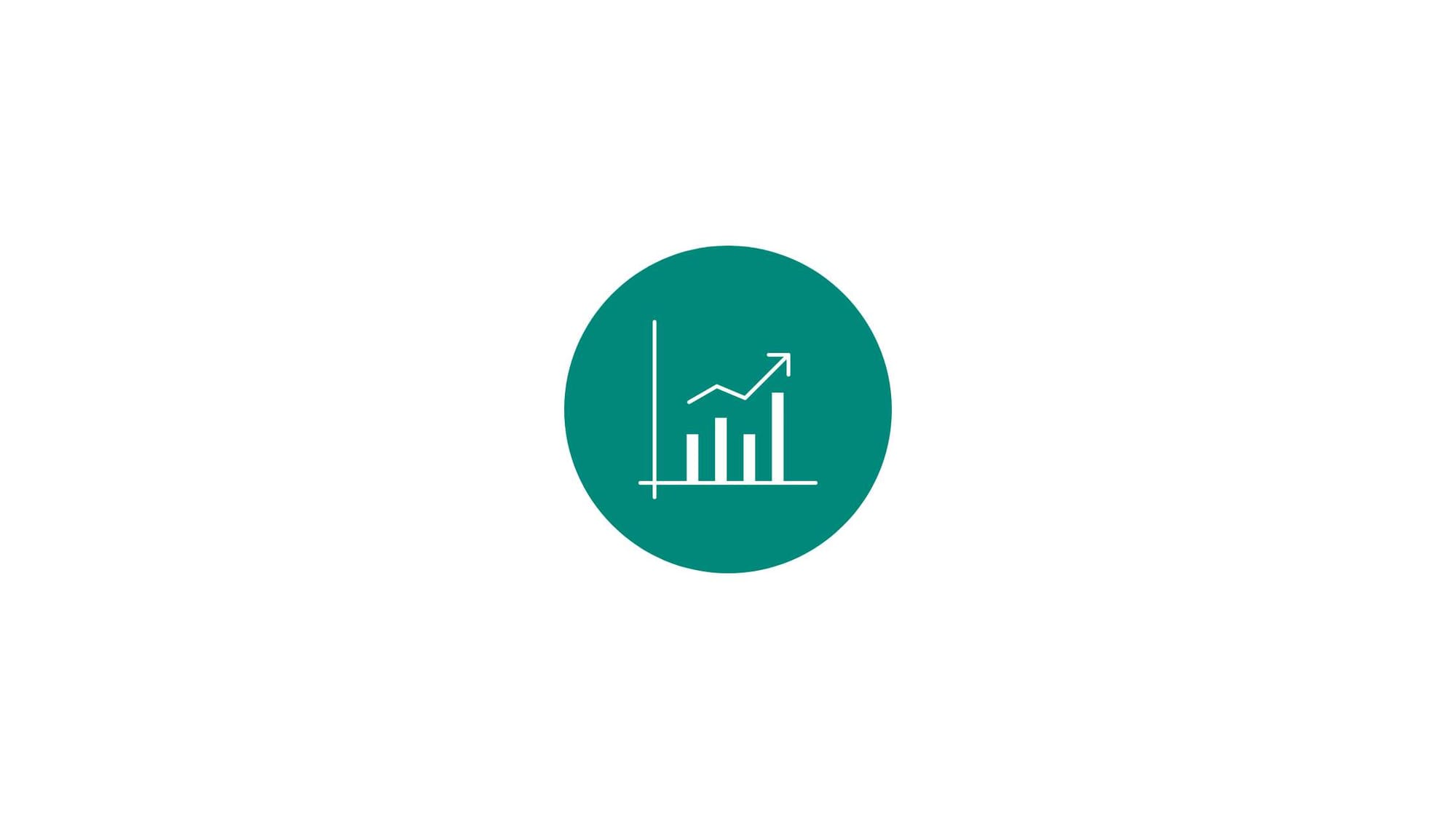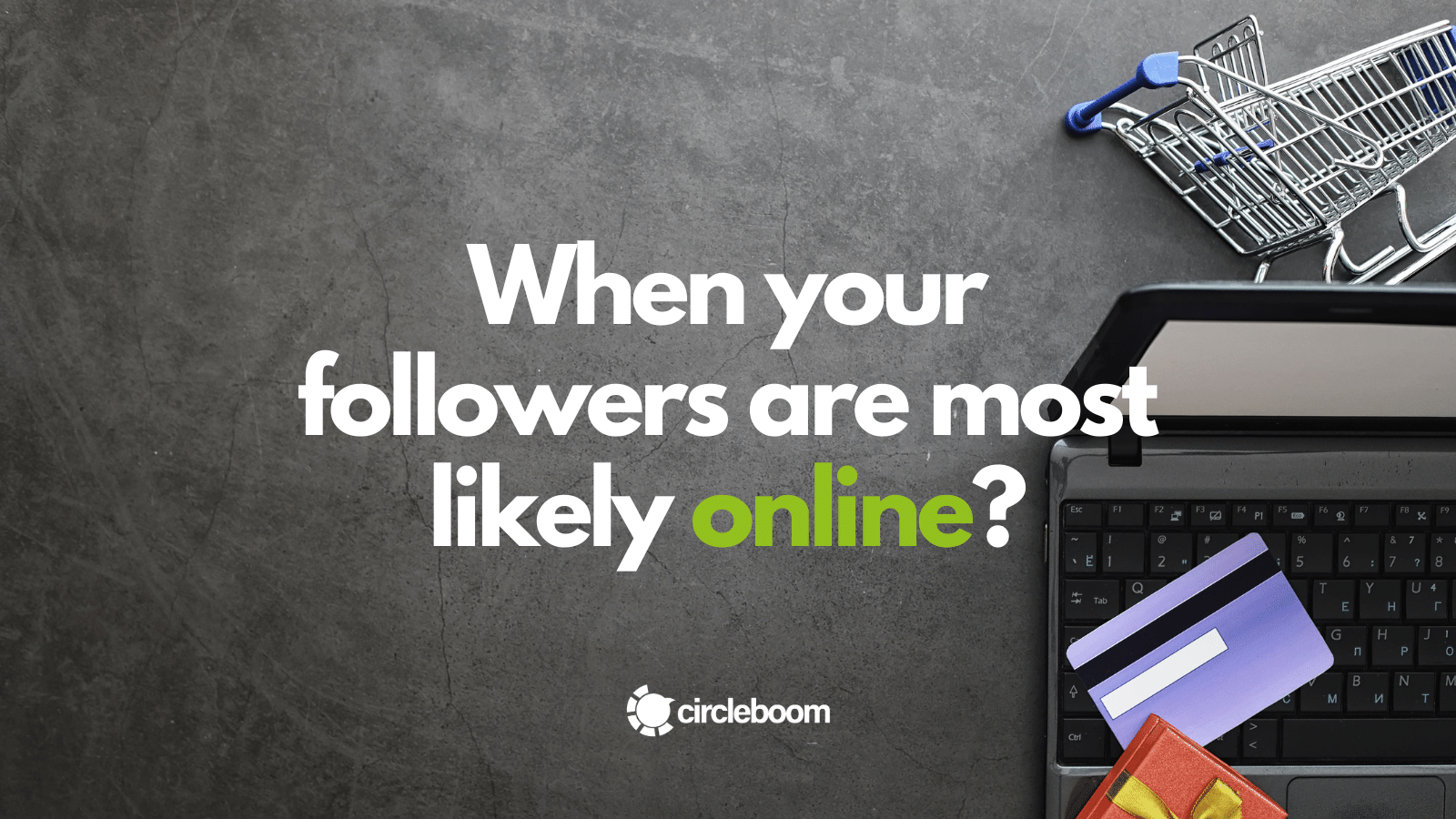I. Introduction: The Allure of the Aged Twitter Account
Establishing a credible presence on platforms like X (formerly Twitter) is paramount. Twitter remains a highly influential platform for businesses and individuals seeking to connect with a global audience, promote products, and share valuable content. Amidst the pressure to grow quickly, an emerging trend involves the purchase of "aged" Twitter accounts – profiles created months or even years prior. These accounts possess an existing history, potentially including tweets, followers, and a degree of perceived establishment, making them distinct from newly created profiles.
The temptation for marketers and businesses is understandable. Buying an aged account seems to offer a shortcut, a way to bypass the often challenging initial phase of building a following and establishing credibility from the ground up. The allure lies in acquiring an instant history and, potentially, an audience, appealing to those seeking rapid results or facing pressure to demonstrate immediate online traction.
However, this perceived shortcut raises critical questions. Does purchasing an aged account truly deliver the promised advantages, or is it a path fraught with significant risks and ethical quandaries? This guide provides an expert, evidence-based analysis of the practice. It delves into the perceived benefits, uncovers the substantial risks, examines platform policies (specifically X's stance), explores the ethical dimensions, and ultimately guides readers toward sustainable and legitimate strategies for building influence on the platform.
II. Why the Interest? Perceived Benefits of Buying Aged Accounts
The market for aged Twitter accounts exists because they appear to offer solutions to common marketing challenges. Understanding these perceived benefits is key to dissecting why the practice is tempting, even if ultimately ill-advised.
- (Mis)Perception 1: Instant Credibility and Authority: One of the primary appeals is the idea that an older account inherently possesses more credibility than a new one. The logic suggests that an account with a history of activity, potentially spanning several years, appears more authentic and established. The "Joined Date," visible on every user's profile, serves as a tangible marker of this history, a signal some marketers believe conveys authority or staying power. Users encountering an older profile might subconsciously associate its age with legitimacy, assuming it has weathered the platform's changes and maintained a long-term presence, unlike potentially fleeting or spammy new accounts. This perception fuels the desire to acquire an account that seems to have already earned its stripes.
- (Mis)Perception 2: Pre-existing Follower Base: A Head Start? Perhaps the most tangible lure is the potential acquisition of an existing follower base. An aged account might come with hundreds or thousands of followers, seemingly saving the buyer significant time and effort compared to the often slow process of organic audience growth starting from zero. For businesses or individuals under pressure to show numerical growth quickly, buying an account with followers appears to offer an immediate audience and social proof. This shortcut bypasses the initial, often difficult, phase of attracting those first crucial followers.

- (Mis)Perception 3: Bypassing Initial Platform Restrictions New accounts on X sometimes face operational limitations designed to curb spam, such as restrictions on the number of accounts they can follow per day or the frequency of their tweets. Aged accounts, having been active longer, may have already surpassed these initial thresholds. This perceived benefit appeals to marketers who want to launch campaigns or engage aggressively from day one, without being hampered by the platform's built-in safeguards for new profiles. The idea is to hit the ground running, unencumbered by the platform's initial checks and balances.
While these perceived benefits paint an attractive picture, a closer examination reveals a starkly different reality, dominated by significant risks and policy violations.
III. Red Flags Flying: The Significant Risks and Downsides

Despite the perceived advantages, purchasing aged Twitter accounts carries substantial risks that can negate any potential benefits and lead to serious consequences. These range from direct policy violations to inheriting problematic accounts with inauthentic audiences.
A. Direct Violation of X (Twitter) Policy: The Biggest Hurdle
The most significant and unavoidable risk is that buying or selling X accounts is explicitly forbidden by the platform. X's Platform Manipulation and Spam Policy clearly states that "account transfers or sales – selling, purchasing, trading, or offering the sale, purchase, or trade of X accounts, usernames, or temporary access to X accounts" is prohibited. This includes exchanging accounts for monetary or even virtual compensation.
Engaging in this prohibited activity can lead to severe consequences, most notably the suspension or permanent banning of the purchased account. This renders any money spent on the account entirely wasted. X employs automated systems and actively removes accounts found to be violating its manipulation and spam policies, which explicitly include account trading. Furthermore, the practice is closely related to username squatting – registering usernames with the intent to sell them, which is also against X's terms of service.
Although a black market for aged accounts clearly exists, facilitated by various online marketplaces and private forums, this does not make the practice legitimate or safe. X explicitly claims ownership over the accounts themselves (not the user-generated content), reinforcing its right to enforce its policies. While X's enforcement might not catch every single private transaction, the risk of detection and subsequent suspension remains constant and significant. Buyers operate entirely outside the platform's rules, engaging in a high-risk activity with absolutely no recourse or protection from X if (or when) the purchased account is shut down. The existence of sellers does not legitimize the transaction; it merely highlights a persistent violation of platform policy.

B. The Follower Facade: Bots, Fakes, and Inactivity
Even if an account evades immediate suspension, the followers it comes with often present a major problem. Accounts sold based on their follower count are highly susceptible to having an audience composed largely of bots, fake profiles, or completely inactive users. These fake followers are often generated programmatically or purchased from third-party services specifically to inflate the account's perceived value for resale.
These inauthentic followers provide no real value. They do not engage meaningfully with content (liking, replying, retweeting relevantly), which decimates the account's actual engagement rate. An account might boast 10,000 followers but receive almost zero interactions on its posts, a discrepancy easily spotted by savvy users and potentially flagged by platform algorithms, undermining the very credibility the buyer sought. Furthermore, X periodically conducts purges of bot and spam accounts. This means a significant portion of a purchased account's follower count could disappear without warning, erasing the primary "asset" acquired.

Identifying these fake followers often involves looking for common red flags: generic or missing profile pictures, nonsensical usernames (often with random numbers), empty or vague bios, spammy or highly repetitive tweets (especially promotional links), a history of following thousands of accounts but having very few followers in return, and very recent account creation dates coupled with unusually high activity or follower counts.
This highlights a fundamental flaw in the logic of buying accounts for followers: the focus on a vanity metric. Buyers are drawn by the large, visible follower number, but this number is meaningless if the followers aren't real or engaged. Real users and platform algorithms recognize the disconnect between high follower counts and low engagement, damaging the account's reputation. Since bots don't convert into customers or genuinely amplify messages, and X actively removes them, the purchased follower count offers no tangible business value and can actively harm perception. Engagement quality and audience relevance are far more critical indicators of influence than raw follower numbers.

C. Engagement & Niche Mismatch: Irrelevant Audiences
Beyond the issue of fake followers, even if an aged account possesses some genuine, human followers, they are unlikely to be relevant to the buyer. These individuals followed the original account owner based on their specific content, interests, personality, or niche. When the account changes hands and potentially shifts focus, this inherited audience has little reason to engage with the new owner's potentially different content, products, or services.
This fundamental mismatch leads to persistently low engagement from the genuine portion of the follower base and minimal potential for conversions or achieving actual business goals, resulting in a poor return on investment. Furthermore, an abrupt change in the account's content direction or tone can alienate the remaining authentic followers, prompting them to unfollow, further diminishing any residual value the account might have held.
D. Security Nightmares: Compromised Accounts and Recovery Risks
Purchasing an aged account introduces significant security vulnerabilities. Buyers have no reliable way to verify the account's history. It could have been previously hacked, used for spreading malware or scams, or involved in activities that violated X's policies, leaving it flagged or compromised in ways invisible to the buyer.
A critical risk involves account recovery. The original seller might retain access to old email addresses, phone numbers, or recovery codes associated with the account. This information could potentially be used to reclaim the account even after the sale is completed, leaving the buyer with nothing. Additionally, aged accounts may have authorized various third-party applications over the years. The buyer inherits these connections, which could pose security risks if the apps are malicious or have weak security practices. Past security configurations, such as multi-factor authentication (MFA) methods (including SMS-based 2FA, which X has restricted for non-premium users), might not be properly reset during the transfer, potentially creating vulnerabilities or complicating secure access for the new owner.
Essentially, buying an aged account means inheriting potential invisible liabilities. The focus on visible metrics like follower count and age often overshadows the hidden risks embedded in the account's history and security posture. Securely transferring ownership is complex and relies entirely on the seller's honesty and thoroughness – qualities difficult to guarantee in transactions that violate platform terms. It's akin to purchasing a used vehicle without inspecting its history or mechanics; hidden problems could render the purchase useless or even harmful.
E. Reputational Roulette: The Cost of Getting Caught
Finally, the act of buying an account, or being perceived as having done so due to an inauthentic follower base, carries significant reputational risk. If discovered, it can severely damage a brand's or individual's credibility and trustworthiness. Real users, potential partners, and even competitors can often spot the signs of fake engagement, such as high follower counts with minimal interaction, or may use third-party tools designed to detect fake followers, potentially exposing the practice publicly.
This undermines any genuine efforts the buyer might be making and devalues the hard work involved in building an authentic online community.It signals a willingness to take unethical shortcuts, which can alienate genuine followers, deter potential collaborators, and tarnish the brand's image.
IV. Due Diligence is Crucial: Assessing Account History and Health (Even Your Own)

Whether considering the ill-advised purchase of an aged account or, more importantly, managing one's own legitimate profile, understanding an account's history and health is vital. Key indicators like creation date, follower quality, and engagement patterns reveal much about an account's authenticity and effectiveness.
- Checking the Account Creation Date: An account's "Join Date" provides immediate context about its tenure on the platform. While an older date doesn't automatically guarantee authenticity (especially if the account was dormant or later sold), it's a useful data point. Extremely recent accounts boasting massive follower counts, for instance, warrant suspicion. Natively, X displays the month and year an account joined on its profile page. For more precise information, or for analyzing multiple accounts efficiently, specialized tools can be employed. Verifying the exact join date can offer clues about an account's history. Tools like Circleboom's Twitter Join Date Checker allow users to look up the specific creation date for any public X account, providing a concrete data point for assessment. This capability is useful not only when evaluating potentially suspicious external accounts but also for understanding the history and longevity of accounts within one's own professional network or industry landscape.
- Auditing Follower Quality: Spotting Bots and Fake Accounts: A large follower count is deceptive if the audience consists primarily of bots, fakes, or inactive profiles. Auditing follower quality is therefore essential to understand an account's true reach and engagement potential. While manual inspection can sometimes identify obvious red flags – such as default profile pictures, spammy usernames or bios, a complete lack of recent activity, or highly skewed follower-to-following ratios – this method is impractical and unreliable for accounts with substantial followings. Automated follower analysis tools offer a more efficient solution. These services scan follower lists for patterns and characteristics commonly associated with fake or bot accounts, providing an assessment of audience authenticity. Regularly auditing your follower base is crucial for maintaining account health and understanding your true audience. Services like Circleboom's Twitter Bot Checker can assist in identifying potentially fake, spammy, or inactive followers by analyzing various account characteristics like profile completeness, activity patterns, and follower/following ratios. Periodically identifying and removing these low-quality followers helps ensure that engagement metrics are more accurate and that the remaining audience is genuine and potentially receptive.
- Evaluating Engagement Quality: Authentic engagement goes beyond simple metrics like total likes or retweets, which can be artificially inflated by bots. Meaningful engagement includes relevant replies, thoughtful comments, quote retweets adding value, and clicks on shared links. A key metric for assessing this is the engagement rate, typically calculated as total engagements (likes, replies, retweets, clicks, etc.) divided by the total number of impressions (times the tweet was seen), then expressed as a percentage. While average engagement rates vary by industry (e.g., around 0.029% across industries in 2024, but higher for sports teams), consistently low rates, especially on accounts with high follower counts, strongly suggest an inauthentic or disengaged audience. Tracking these metrics over time using X's native Analytics (available to Premium subscribers) or third-party social media management tools is crucial for understanding content performance and audience health. The interplay between account age, follower count, and engagement quality provides a more holistic view of an account's legitimacy. An aged accountmight initially appear credible due to its join date. However, if this account has a large follower count acquired through dubious means (likely bots or fakes), its engagement rate will almost certainly be negligible. This combination – old account, many followers, virtually no real interaction – is a significant red flag, strongly indicating that the profile is inauthentic, likely purchased, or heavily manipulated. Therefore, assessing an account requires looking beyond superficial, easily faked metrics. Analyzing follower authenticity and the quality of engagement paints a far truer picture of its actual health and influence. Tools that facilitate checking join dates and identifying bot followers are valuable components of this deeper, more meaningful assessment.

Table 1: Checklist for Assessing Twitter Account Health (Yours or Others)

V. Ethical Crossroads: The Moral Implications

Beyond the practical risks and policy violations, the practice of buying aged Twitter accounts raises significant ethical concerns that responsible marketers and businesses must consider.
- Deception and Misrepresentation: At its core, buying an account is an act of deception. It intentionally misrepresents the buyer's history, organic growth trajectory, and genuine influence on the platform. Presenting an acquired account with an artificial history and potentially fake followers misleads the public, potential business partners, advertisers, and even the platform itself about the true nature and reach of the entity behind the profile.
- Authenticity and Trust: Building a presence on social media ethically involves earning trust through consistent, valuable contributions and genuine interactions. Purchasing an account bypasses this process entirely, substituting authentic relationship-building with a transactional shortcut. This fundamentally undermines the trust that forms the basis of healthy online communities and brand relationships. Companies have an ethical responsibility to be transparent and not deliberately obscure their follower counts or engagement levels with purchased, fake accounts.
- Data Privacy Concerns: The transaction itself involves the transfer of user data, specifically, the list of followers associated with the account, without the explicit consent of those followers.
- Fairness and Playing by the Rules: Engaging in account buying directly contravenes the established rules of the platform (X's Terms of Service). Ethical conduct generally involves adhering to the agreed-upon rules of the systems within which one operates. Choosing to violate these terms for perceived gain represents unfair competition against those who invest time and effort in legitimate growth strategies. It prioritizes expediency over integrity.
The decision to buy an account creates ripples beyond the immediate transaction. It contributes to a larger ecosystem of online inauthenticity, spam, and manipulation. By purchasing accounts often inflated with fake followers, buyers inadvertently support the infrastructure that generates these bots and spam accounts. This practice misleads other users and businesses, normalizes deceptive tactics, and makes it more challenging for genuine accounts to gain visibility based on merit. Ultimately, it erodes the overall trust in social media metrics and the authenticity of online interactions, harming the health of the digital public square.

VI. Building Genuine Influence: The Recommended Path (Organic Growth)

Given the significant policy violations, practical risks, and ethical concerns associated with buying aged Twitter accounts, the only recommended path for sustainable success is building a presence organically. While this requires patience and consistent effort, it results in a genuinely engaged, relevant audience and a credible, defensible online reputation.
- The Power of Starting Fresh: Building an account from the ground up allows for the cultivation of an audience genuinely interested in the specific value proposition offered. This leads to higher quality engagement, better conversion potential, and a stronger community foundation compared to the superficiality of a purchased account.
- Optimizing Your Profile: First impressions matter. A complete and professional profile is crucial for attracting and retaining followers. This includes a high-quality profile picture (a clear headshot for individuals or a sharp logo for brands), an engaging and visually appealing banner image, and an informative bio. The bio, though limited in characters (160 on X), should clearly state who you are or what the brand does, incorporate relevant keywords for discoverability, and ideally include a link to a website or landing page.
- Crafting a Compelling Content Strategy:
- Provide Value: The cornerstone of organic growth is consistently sharing content that is valuable to the target audience – whether it's educational (tips, insights), entertaining (humor, stories), inspiring, or informative. Understand the audience's needs and interests.
- Maintain Consistency: Regular posting is essential to stay visible in followers' feeds and build engagement habits. Recommendations vary, but posting multiple times per day (ranging from 1-3 to 5+) is often suggested. Posting at times when the target audience is most active further maximizes reach. Scheduling tools can help maintain this consistency.
- Leverage Visuals: Tweets incorporating high-quality images, videos, GIFs, or infographics consistently outperform text-only posts in terms of engagement. Video content, in particular, drives significant interaction.
- Experiment with Formats: Utilize X's features like Threads to share longer-form content or tell stories. Use Polls to encourage direct interaction and gather opinions. Host or participate in Twitter Spaces for live audio conversations and community building.
- Strategic Hashtag Use: Incorporate relevant hashtags (generally 2-3 per tweet is advised) to increase the discoverability of posts among users interested in those topics.Research effective hashtags but avoid irrelevant or excessive tagging, which can appear spammy.

- Fostering Authentic Community Engagement:
- Be Conversational and Responsive: Social media is interactive. Promptly reply to comments and mentions, like relevant responses, and retweet valuable content from others. This shows appreciation and encourages further interaction.
- Join Relevant Conversations: Don't just broadcast; participate. Engage in Twitter Chats specific to the industry, comment thoughtfully on trending topics, and interact with posts from key influencers or larger accounts in the niche. This increases visibility among relevant audiences.
- Build Relationships: Network with peers, potential collaborators, and industry leaders. Support others by sharing their content or engaging in discussions. Collaboration can significantly expand reach. Mentioning relevant accounts when sharing content can also foster connections.
- Utilize Twitter Communities: Engage actively within existing X Communities related to the niche, or consider creating a dedicated community to foster deeper connections around shared interests.
- Leveraging Analytics for Continuous Improvement:
- Monitor Performance: Regularly track key metrics such as impressions, engagement rate, follower growth, profile visits, and link clicks using X's native Analytics tool (for Premium users) or comprehensive third-party platforms.

- Identify Successes and Refine: Analyze which types of content resonate most (e.g., videos vs. threads), which topics generate the most discussion, and the optimal times for posting based on audience activity. Use these insights to continuously refine the content and engagement strategy.

- (Optional but Recommended) Ethical Advertising: For those seeking to accelerate growth legitimately, X Ads offer a platform-compliant method. Unlike buying accounts, running targeted ad campaigns is an officially supported feature. Campaigns can be designed specifically to gain relevant followers (Promoted Accounts) or drive website traffic, among other objectives. X Ads allow for precise audience targeting based on demographics, interests, keywords, and behavior, ensuring that promotional efforts reach users genuinely likely to be interested in the account's content or offerings. This stands in stark contrast to the irrelevant and often fake audiences acquired through account purchasing.

VII. Leveraging Tools for Legitimate Success

While organic growth requires strategic effort, various tools can significantly aid in managing and optimizing a legitimate X presence efficiently and ethically. Social media management platforms help streamline workflows, provide deeper insights, and maintain account health.
The role of these tools is not to facilitate policy violations like account purchasing, but rather to enhance the effectiveness of genuine growth strategies. For instance, understanding account history and audience composition is crucial. Tools designed for assessment, such as Circleboom's Twitter Join Date Checker, can provide specific data like account creation dates, useful for analyzing the tenure of accounts in one's network or industry. Similarly, maintaining a healthy follower base free from excessive bots or spam is vital for accurate engagement metrics. A Circleboom Twitter Bot Checker helps identify potentially fake, inactive, or spammy accounts within one's own follower list by analyzing various signals.
Beyond assessment, tools can assist in active, legitimate account management. Comprehensive audience analysis features can identify inactive followers who aren't contributing to engagement, check follower demographics, or pinpoint highly influential followers. Furthermore, content management features, like the ability to bulk delete old tweets, can be invaluable for legitimate purposes such as rebranding, removing outdated information, or cleaning up a profile after a strategic shift – actions performed on an account the user rightfully owns and operates. These functionalities support responsible stewardship of an authentic X presence, contrasting sharply with the illicit nature of account purchasing.

VIII. Conclusion: Build, Don't Buy
The prospect of buying an aged Twitter account, promising instant credibility and followers, may seem like an attractive shortcut. However, this path is riddled with significant risks and ethical pitfalls that far outweigh any perceived benefits.
The practice is a direct violation of X's Platform Manipulation and Spam Policy, carrying the constant threat of account suspension or permanent deletion, rendering the purchase worthless. Furthermore, purchased accounts are often laden with fake, bot, or inactive followers that provide no real engagement or business value, damaging credibility rather than enhancing it. Security risks are substantial, as buyers inherit unknown account histories, potentially including compromises or retained recovery information by the seller. Ethically, buying accounts involves deception, undermines trust, and contributes to the proliferation of inauthenticity online.
Table 2: Perceived Benefits vs. Reality of Buying Aged Twitter Accounts

In contrast, building an X presence organically, while demanding time and consistent effort, cultivates a genuinely interested and engaged audience. This approach fosters authentic connections, builds lasting credibility, and delivers sustainable results that align with ethical marketing practices. The investment in creating valuable content, engaging with the community, and understanding audience analytics yields true influence and a resilient online presence.
Therefore, the expert recommendation is unequivocal: do not buy aged Twitter accounts. The risks are too high, the benefits largely illusory, and the practice fundamentally violates platform rules and ethical standards. Instead, invest resources in legitimate, organic growth strategies. The rewards of earning genuine trust and influence through authentic effort are far more valuable and enduring.















